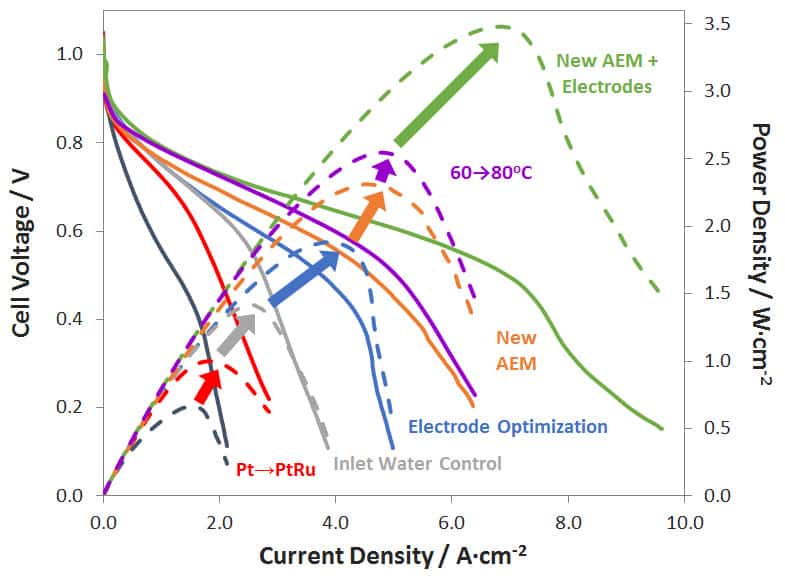Join the audience for a live webinar at 3 p.m. BST/10 a.m. EDT on 23 September 2020 exploring the challenges for the development and deployment of AEM fuel cells
Want to take part in this webinar?
 In recent years, advances in alkaline exchange membrane fuel cells (AEMFCs) with anion exchange membrane (AEM) solid polymer electrolytes have gained traction due to their distinct, and potentially game-changing, advantages over proton exchange membrane fuel cells. There has been growing excitement in the past 2–3 years, especially as AEMFCs have reached a stage in their development where state-of-the-art cells are reaching comparable power densities to proton exchange membrane fuel cells (PEMFCs) and are able to operate stably for more than 1000 hours.
In recent years, advances in alkaline exchange membrane fuel cells (AEMFCs) with anion exchange membrane (AEM) solid polymer electrolytes have gained traction due to their distinct, and potentially game-changing, advantages over proton exchange membrane fuel cells. There has been growing excitement in the past 2–3 years, especially as AEMFCs have reached a stage in their development where state-of-the-art cells are reaching comparable power densities to proton exchange membrane fuel cells (PEMFCs) and are able to operate stably for more than 1000 hours.
However, AEMFCs still need to address at least three critical issues if they are to be deployed in the field:
- Water management in AEMFCs is more complex than PEMFCs and there is a tendency for significant water accumulation and flooding at the anode – sacrificing both performance and longevity.
- There is a need to reduce costs significantly below the PEMFCs and doing this will require completely PGM-free catalysts.
- Management of CO2 and mitigation of CO2-related performance losses.
This presentation will begin with an introduction to how AEMFCs operate, their similarities and differences to PEMFCs. Then, state-of-the-art performance and durability will be shown along with an explanation for how these two were systematically improved over the past few years due to advances in materials as well as innovations in electrode design and reactor engineering. Next, the three issues above – water management, PGM-free catalysts and CO2 management – will be discussed, with a focus on the fundamental thermodynamic, kinetic and transport barriers that remain. Finally, an outlook on the future of the technology and important areas for research will be
discussed.
Want to take part in this webinar?

William (Bill) Mustain is a Professor in the Department of Chemical Engineering at the University of South Carolina (USC). In 2017, he moved to USC from the Department of Chemical and Biomolecular Engineering at the University of Connecticut (UConn) where he was an Associate Professor and the United Technologies Corporation Professor of Engineering Innovation. He joined UConn as an Assistant Professor in 2008 and was tenured and promoted to Associate Professor in 2013. Professor Mustain has worked in several areas related to electrochemical energy generation and storage including: high-capacity materials for lithium-ion batteries, catalysts and supports for proton exchange membrane and anion exchange membrane fuel cells and electrolyzers, electrochemical synthesis of fuels, electrochemical control of biological systems, the purposeful use of carbonates in low-temperature electrochemical systems, and the electrochemical capture and utilization of CO2. He has been the PI or co-PI on approximately $10m of externally funded research projects. He has published more than 100 peer-reviewed articles and three book chapters to date and has more than 100 invited and conference talks. He has been the recipient of several awards including the 2009 Illinois Institute of Technology Young Alumnus Award; 2013 US Department of Energy Early Career Award; 2014 Connecticut Quality Improvement Platinum Award; 2014 Supramaniam Srinivasan Young Investigator Award (awarded by the Energy Technology Division of The Electrochemical Society); 2017 UConn Chemical Engineering Faculty of the Year Award, 2019 USC Chemical Engineering Publication Award; and 2015–2016 Fulbright Scholar Fellowship.



